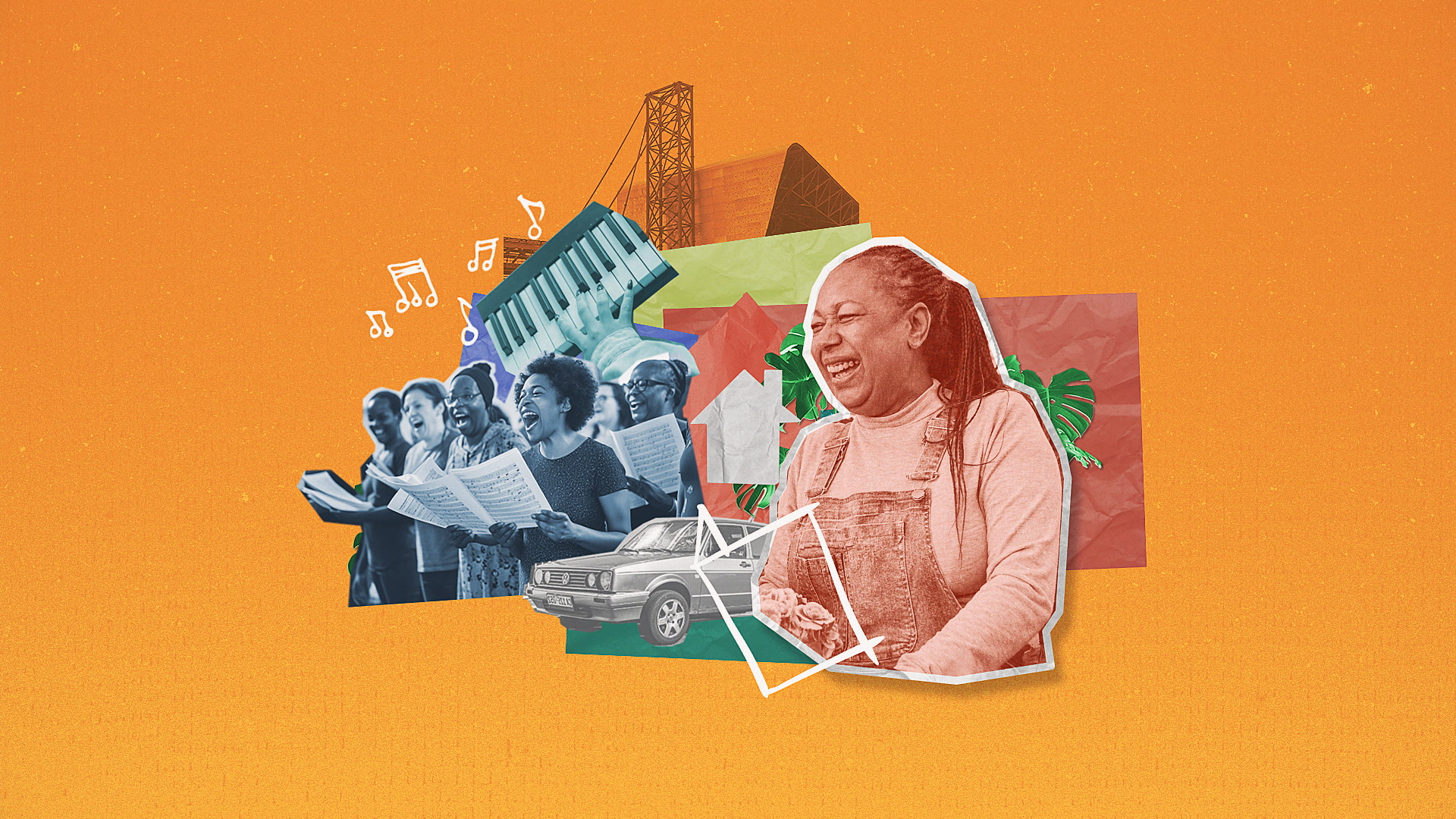The Social Care Future team got in touch with me in late 2022 with an exciting but challenging brief. They’d built a vibrant community of passionate individuals and organisations that believed there is a bright and positive vision for social care that isn’t currently being told. It was essential to tell this story though, so the public knew how important it was to support and protect social care as a concept, as we’ll all interact with social care at some point in our lives. Rather than echo the negative and complex framing that permeates much of the public-facing material, Social Care Future wanted to tell the positive stories that exist and excite but don’t reach the public.
‘We needed to take this evidence-based, intentionally framed vision and adapt and dramatize it into a powerful piece of narrative storytelling.’
We all wanted to create a powerful and impassioned piece that communicated the core message ‘We all want to live in a place we call home, with the things and the people that we love’. This messaging had been created and rigorously tested with focus groups, as had a bank of other key messaging and framing. We needed to take this evidence-based, intentionally framed vision and adapt and dramatize it into a powerful piece of narrative storytelling.
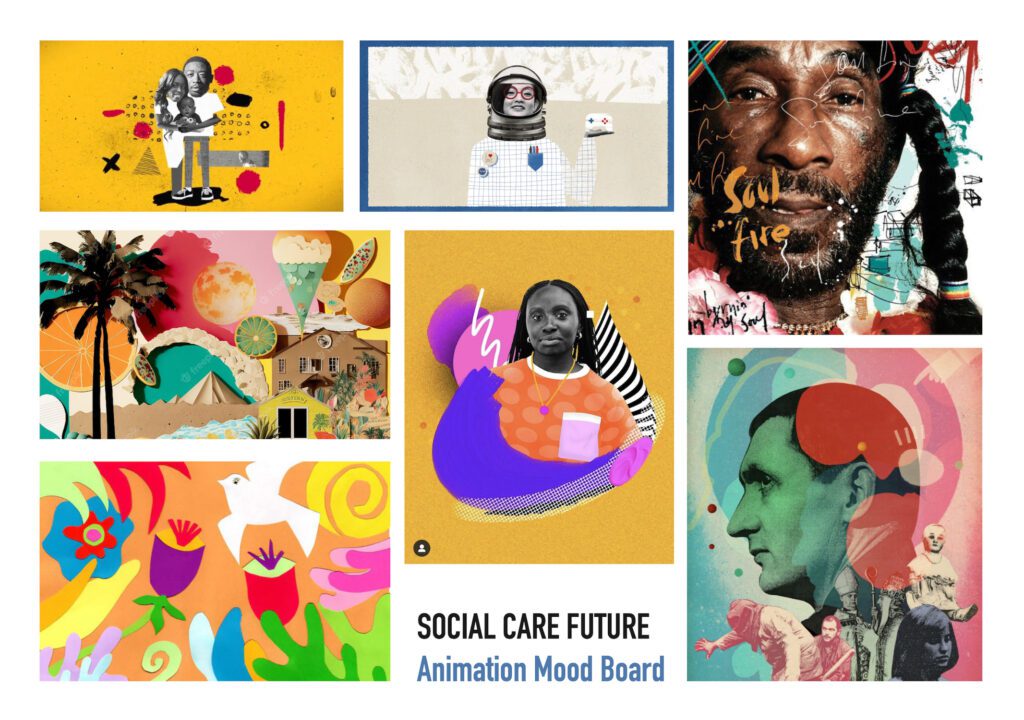
A mood-board page from animation development
We started by talking through what was essential that the viewer learnt – that social care was for everyone, that it is transcended race, age, ethnicity and class, that it was an enabler of life and living, that it was not just essential to many – but crucial to all. At its heart social care is a beautiful, caring, community focused support network. It lives within so many of our shared societal stories, experiences and relationships, but is somehow mired and hidden by decades of negative framing and grim coverage. It needed a makeover.
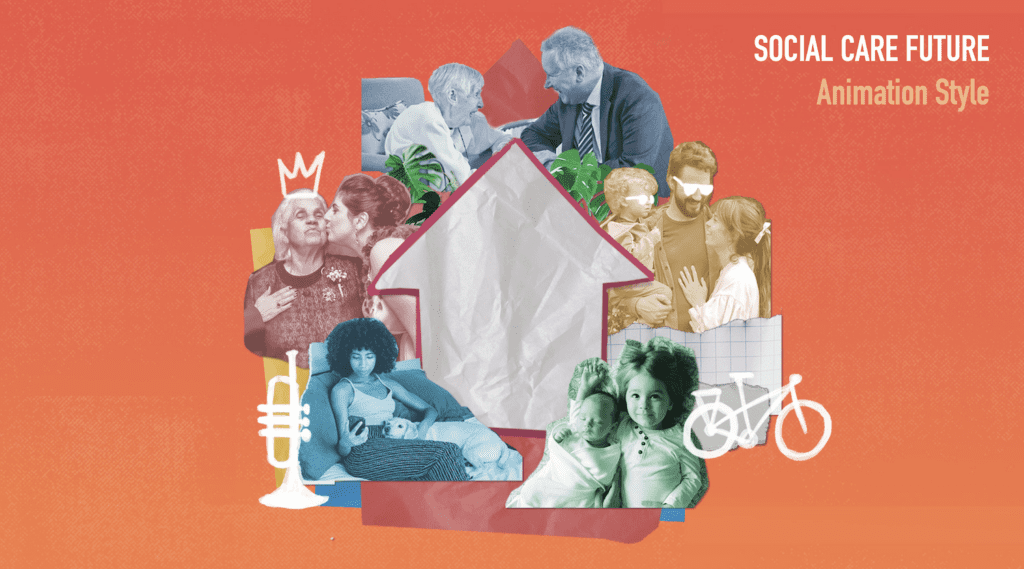

Development still of the ‘home’ motif for the animation by Phil Davies at BattleCat Studios
The key element that kept coming up was ‘home’. In all the focus groups things would always come back to home, and what it meant. Home as a place, home as a feeling, home as security, home as family and home as a place of freedom, self- actualization and creativity. We decided very early to have a home motif throughout the entire piece. It became clear we should start the script with this home element, from the mission statement, and then build out the narrative from there. To paint a beautiful utopian image of the dream scenario for social care and then explain that things do not work like this, but one day could. It meant we would only briefly need to go into the dark and negative vision that much public discourse for this space often lives within, and then be able to build a practical and positive vision of how things can be changed and done differently in the future. A vision of empowered communities and people making change and taking the system with them. A vision of people being supported to full live their wondrously ordinary lives.
‘Home as a place, home as a feeling, home as security, home as family and home as a place of freedom, self-actualization and creativity.’
Scripting a short piece like this is extremely tough when you want the end-product to feel natural and digestible. There are so many things you want to say and include, the tone needs to be right, the piece needs to build and evolve to a crescendo. You need to reference case studies, but also keep it inclusive and open. You need to speak in truths, but also in dreams. All in 200 words! It meant we had many scripting rounds and discussions on what we could and couldn’t include and how to best articulate it.
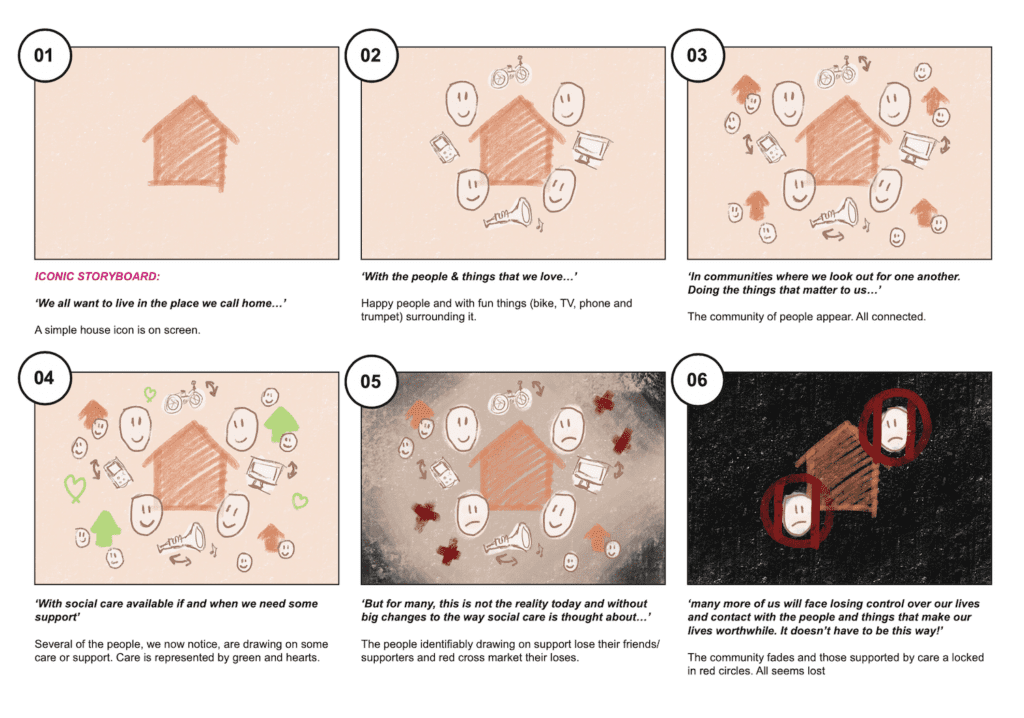

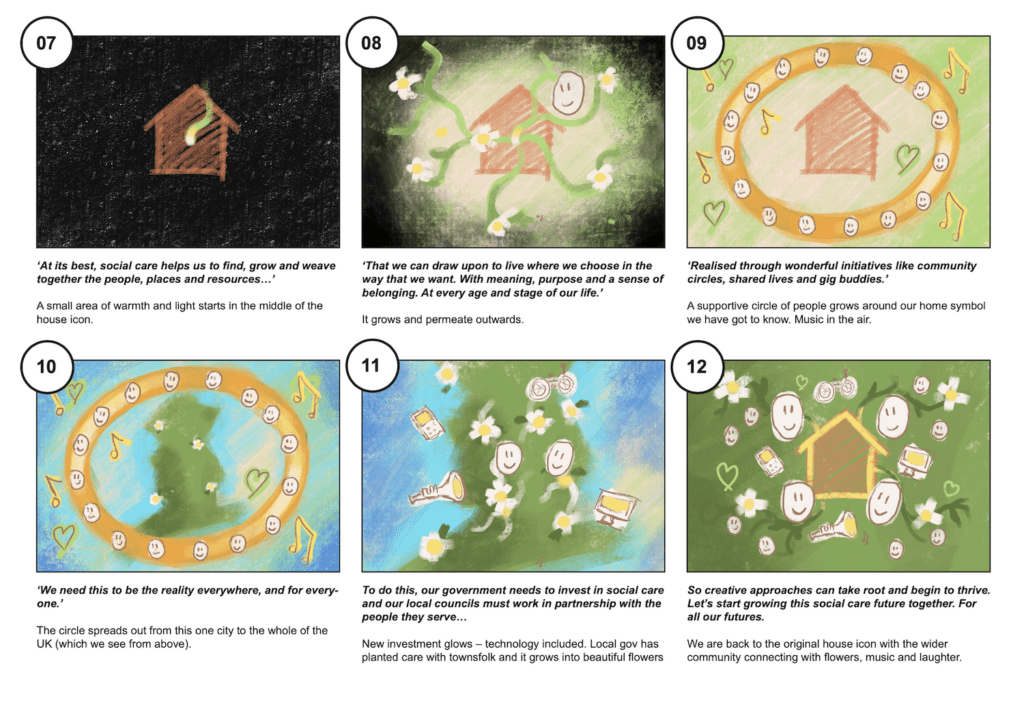

One of the storyboard drafts for the animation (there were many!)
Once we had a script, the challenge was then to storyboard the film and work out how our simple words were going to become simple images that would build and flow into each other. We focused on keeping the central home motif holding the piece together, a small and diverse cast telling the story and an iterative sequential visual story growing throughout the piece. Once we got into the second half, we needed a new visual element to help the piece grow, evolve and expand and after much thought realised it that there was a lot of crossovers with an ecology perspective. Building resilience and strength in a community system could be captured in visual terms with people tending allotments, plants and gardens – or at least a flavour of that careful and deliberate growing could bring what we intended in tone to the piece.
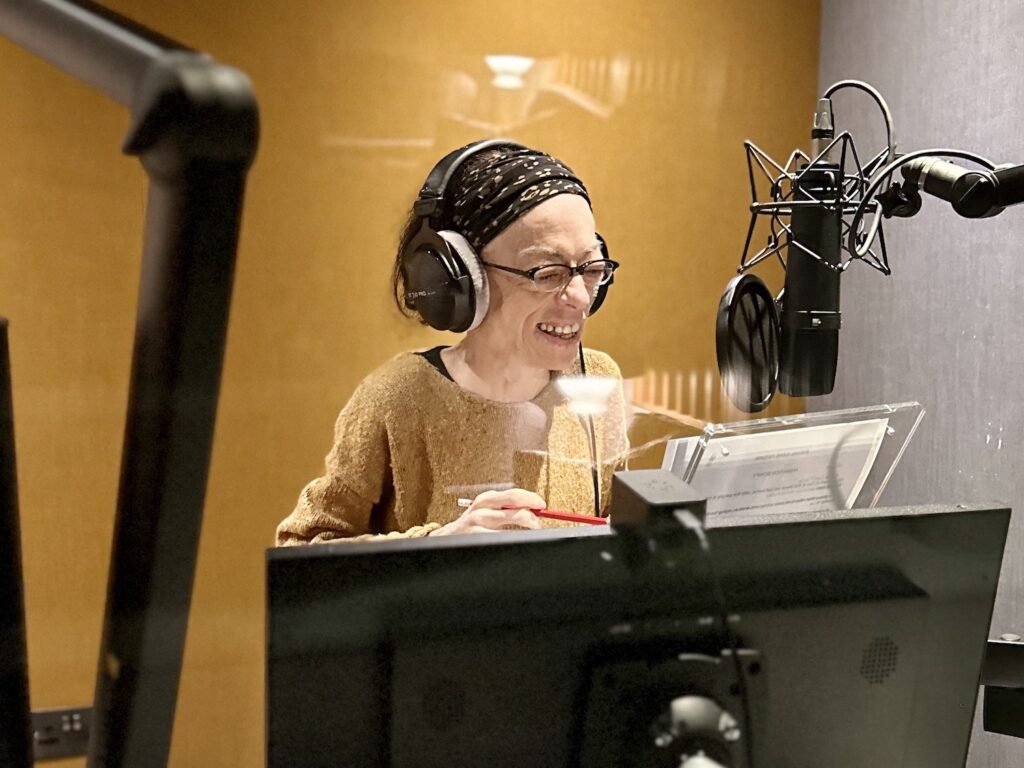

Liz Carr recording the Voiceover
With our words and images lined up we needed a voice! From the very beginning the one person we wanted for this was Liz Carr. She’s a huge star, an amazing personality, a phenomenal actor and someone with deep personal understanding and experience of the enabling power of social care. Liz was very happy to help and Gramercy Park Studios kindly offered their studio and services for us to record the voiceover. Liz found just the right tone for the read, and it all came together very quickly. Thank you Liz!
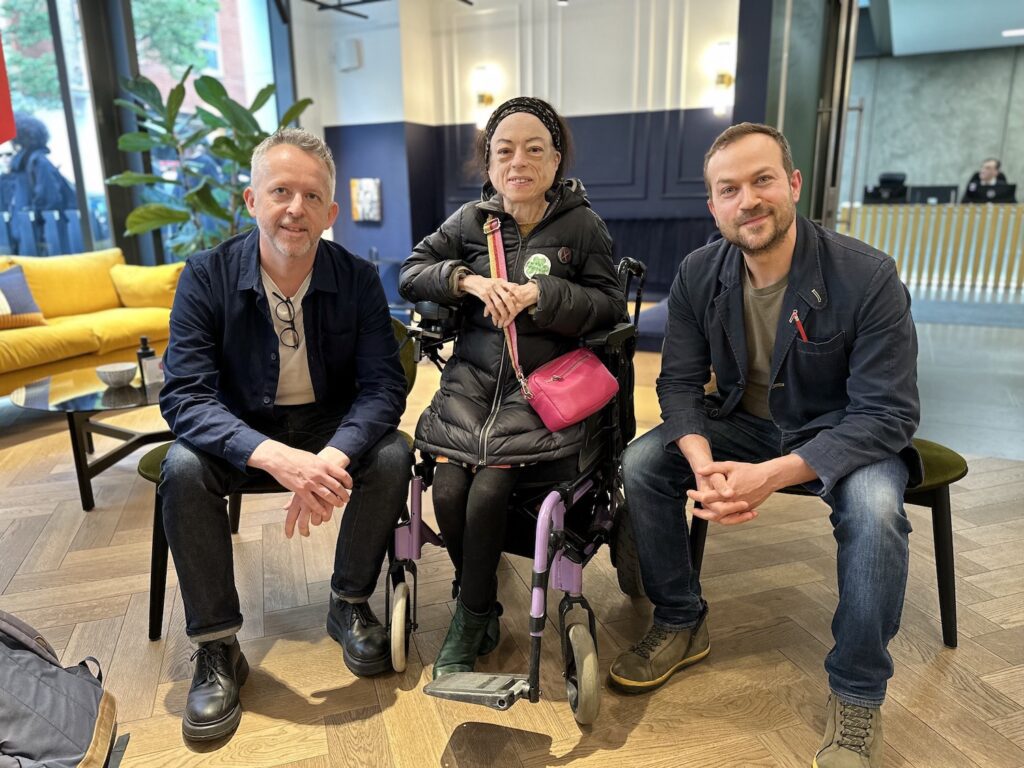

Liz Carr with Yoav Segal (film director) and Neil Crowther (one of the co-founders of SCF)
It was then over to Phil Davies of BattleCat Studios who designed and animated the film around Liz’s voiceover. Animating something like this is extremely iterative as once you edit your storyboard some things click, whilst others jar, and you have to rejig the order and choreography like a house of cards making sure you establish the right elements to build on and create a clear story that’s engaging and involving. The key aim is to hold onto the public’s attention, so you can tell them the whole story. You must lean into an ‘edu-tainment’ intention, making the piece exciting, whilst also informative. Phil sprinkled lots of animation magic on the piece so there are always little details to pick up however many times you watch it.
“I am thrilled to support this movement – everyone should have the right to live in a place they call home with the people and things that we love, in communities where we look out for one another, doing things that matter to us. I hope everyone can get behind calling for a brighter #SocialCareFuture.”
Liz Carr, Actor, Filmmaker and Campaigner
Once the animation was complete Gramercy Park Studios added a world of sound effects to bring the piece truly to life, including choirs and clubbing, pitched to match the music, and we were ready to share our film with the world. The hope is that this story will influence public debate and become one of many films Social Care Future make to help change the story around social care. We all want to live in a place we call home, and we all should be able to.
If you’ve enjoyed reading this, please share the film far and wide as that’s what it’s all about.
